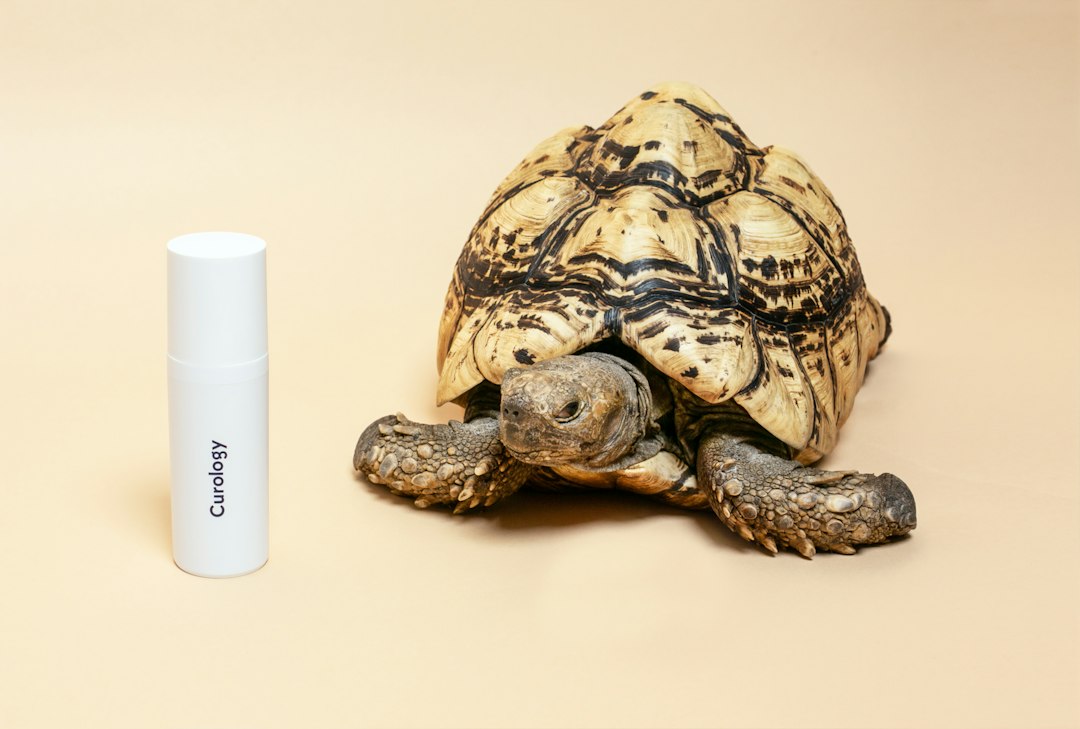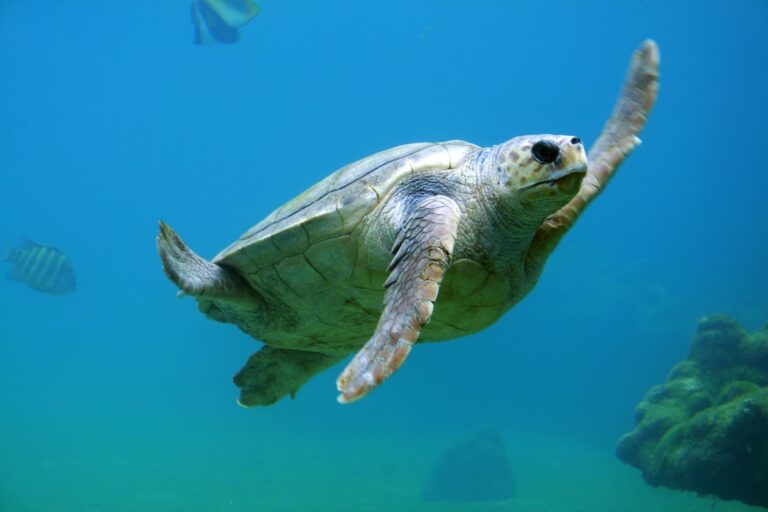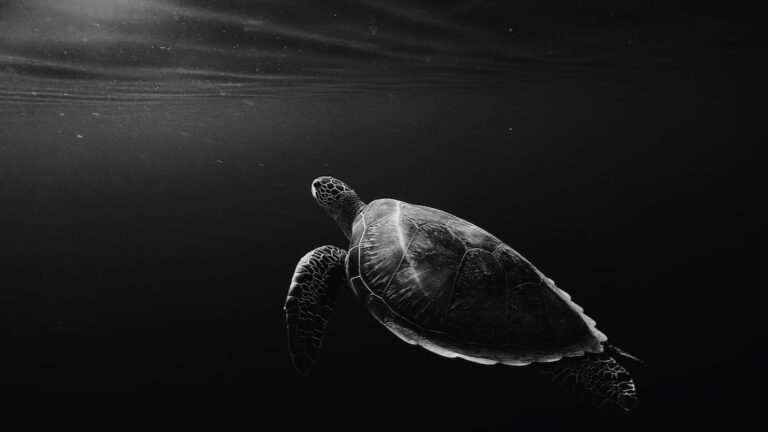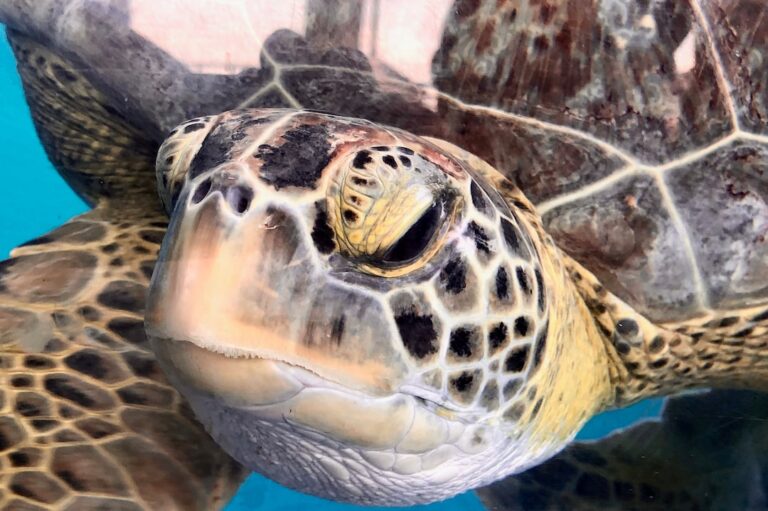Why Do Turtles Kiss Each Other?
Turtles are fascinating creatures that have captured the curiosity of humans for centuries. Their behavior is complex and intriguing, and understanding it can provide valuable insights into their lives and the natural world as a whole. From their communication methods to their socialization patterns, turtles exhibit a wide range of behaviors that are both fascinating and important to study.
Understanding turtle behavior is crucial for several reasons. Firstly, it allows us to gain a deeper appreciation for these incredible creatures and their unique ways of interacting with the world. By studying their behavior, we can learn more about their natural instincts, habits, and needs, which can help us better care for them in captivity and protect them in the wild.
Additionally, understanding turtle behavior can provide valuable information about the ecosystems they inhabit. Turtles play important roles in their environments as both predators and prey, and their behavior can have significant impacts on the balance of these ecosystems. By studying their behavior, scientists can gain insights into the overall health and functioning of these ecosystems.
Table of Contents
Understanding Turtle Communication: The Role of Touch
Turtles communicate with each other using a variety of methods, one of which is touch. Touch plays a crucial role in turtle communication, allowing them to convey information and establish social bonds. Turtles have highly sensitive skin, particularly on their heads and limbs, which allows them to perceive even subtle touches.
Examples of touch communication in turtles include gentle nudges or taps with their heads or limbs. These touches can convey messages such as dominance, submission, or affection. For example, a gentle nudge from one turtle to another may signal submission or a desire to establish a social bond.
Touch communication is particularly important during courtship rituals. Male turtles often use touch to initiate courtship behaviors with females, such as gently stroking their shells or limbs. These touches can convey information about the male’s intentions and readiness to mate.
The Importance of Socialization for Turtles
Socialization is crucial for turtles, as it allows them to establish and maintain social bonds with others of their species. Turtles are not solitary creatures; they often live in groups or colonies and engage in various social behaviors. Socialization provides turtles with opportunities for companionship, protection, and learning from one another.
Turtles socialize with each other through various behaviors, including touch, vocalizations, and visual displays. They may engage in activities such as basking together on rocks or logs, swimming in groups, or engaging in courtship rituals. These social interactions help turtles establish hierarchies, communicate their intentions, and form bonds with others.
Socialization also has several benefits for turtles. It can help reduce stress and promote overall well-being by providing them with companionship and a sense of security. Social interactions can also facilitate learning and the transfer of knowledge between individuals, allowing turtles to learn from the experiences of others.
The Science Behind Turtle Kissing: Chemical Signaling
Turtle kissing is a behavior that involves the exchange of chemical signals between individuals. Turtles use chemical signals, known as pheromones, to communicate with each other and convey information about their reproductive status, health, and social hierarchy.
Pheromones are chemical substances that are produced by animals and released into the environment. They can be detected by other individuals of the same species, often through specialized sensory organs or receptors. In turtles, pheromones play a crucial role in mating behavior and courtship rituals.
When turtles engage in “kissing” behavior, they are actually exchanging pheromones through their saliva. These pheromones contain information about the individual’s reproductive status and can help determine if they are ready to mate. By exchanging pheromones through kissing, turtles can assess each other’s suitability as potential mates.
The Different Types of Turtle Kisses
Turtle kisses can take on different forms and have different meanings depending on the context. Here are some examples of the different types of turtle kisses:
1. Courtship Kiss: During courtship rituals, male turtles often initiate a courtship kiss with females. This involves gently touching or stroking the female’s shell or limbs with their heads or limbs. The courtship kiss is a way for the male to convey his intentions and readiness to mate.
2. Affectionate Kiss: Turtles also engage in kissing behavior as a sign of affection and bonding. This type of kiss is often seen between individuals that have established a social bond or are part of the same social group. It involves gentle touches or nudges with the head or limbs.
3. Dominance Kiss: In social hierarchies, dominant turtles may engage in kissing behavior as a way to assert their dominance over subordinate individuals. This type of kiss is often more forceful and may involve biting or aggressive touches.
The meaning behind each type of turtle kiss can vary depending on the individuals involved and the context in which it occurs. It is important to consider the overall behavior and body language of the turtles to fully understand the meaning behind their kisses.
The Role of Hormones in Turtle Mating Behavior
Hormones play a crucial role in turtle mating behavior, influencing their reproductive cycles, courtship rituals, and overall behavior. Testosterone and estrogen are two hormones that have significant impacts on turtle mating behavior.
Testosterone is a hormone that is primarily produced by male turtles and is responsible for the development of secondary sexual characteristics, such as larger size, longer claws, and more aggressive behavior. Testosterone levels increase during the breeding season, promoting courtship behaviors and mating.
Estrogen is a hormone that is primarily produced by female turtles and is responsible for regulating their reproductive cycles. Estrogen levels fluctuate throughout the breeding season, signaling to males that the female is ready to mate. Male turtles can detect these changes in estrogen levels through pheromones, which can trigger their courtship behaviors.
Hormones also play a role in turtle kissing behavior. The exchange of pheromones through kissing can stimulate the release of hormones in both males and females, further promoting their reproductive behaviors and increasing their chances of successful mating.
Turtle Kissing as a Sign of Affection
Turtle kissing is not only a behavior associated with mating and courtship but also a sign of affection and bonding between individuals. Turtles that have established social bonds or are part of the same social group often engage in kissing behavior as a way to strengthen their relationships.
Turtle kisses as a sign of affection typically involve gentle touches or nudges with the head or limbs. These kisses can convey feelings of trust, companionship, and emotional connection between individuals. They are often seen during social interactions such as basking together, swimming in groups, or engaging in other shared activities.
Turtle kisses as a sign of affection can also help reduce stress and promote overall well-being. The physical contact and social interaction associated with kissing can provide turtles with a sense of security and comfort, similar to how humans may feel when receiving a hug or a kiss from a loved one.
The Connection Between Turtle Kissing and Courtship Rituals
Turtle kissing is an integral part of courtship rituals, serving as a way for males to initiate courtship behaviors with females. During courtship, male turtles often engage in kissing behavior by gently touching or stroking the female’s shell or limbs with their heads or limbs.
The purpose of the courtship kiss is to convey the male’s intentions and readiness to mate. By engaging in kissing behavior, the male turtle can assess the female’s response and determine if she is receptive to his advances. The exchange of pheromones through kissing also provides valuable information about the female’s reproductive status and suitability as a mate.
Courtship rituals in turtles can be complex and involve a series of behaviors, including displays of aggression, courtship dances, and vocalizations. Turtle kissing is often a precursor to these behaviors and serves as a way to establish a connection and initiate the courtship process.
The Role of Turtle Kissing in Maintaining Social Hierarchies
Turtle kissing also plays a role in maintaining social hierarchies within turtle populations. In social hierarchies, dominant turtles may engage in kissing behavior as a way to assert their dominance over subordinate individuals.
Dominant turtles may use more forceful kisses, involving biting or aggressive touches, to establish their dominance. Subordinate turtles may respond by submitting to the dominant individual or engaging in submissive behaviors such as retreating or avoiding direct eye contact.
Kissing behavior in social hierarchies can help maintain order and stability within the group. It allows turtles to establish and reinforce their positions within the hierarchy, reducing the likelihood of conflicts or aggression between individuals.
The Many Mysteries of Turtle Behavior Unraveled
In conclusion, the world of turtle behavior is a fascinating and complex one. From their communication methods to their socialization patterns, turtles exhibit a wide range of behaviors that are both intriguing and important to study.
Understanding turtle behavior is crucial for several reasons. It allows us to gain a deeper appreciation for these incredible creatures and their unique ways of interacting with the world. It also provides valuable insights into their natural instincts, habits, and needs, which can help us better care for them in captivity and protect them in the wild.
By studying turtle behavior, scientists can also gain insights into the overall health and functioning of ecosystems. Turtles play important roles in their environments as both predators and prey, and their behavior can have significant impacts on the balance of these ecosystems.
In conclusion, the study of turtle behavior is a fascinating and important field of research. By unraveling the mysteries of turtle behavior, we can gain a deeper understanding of these incredible creatures and the natural world as a whole.
If you’re curious about the social behavior of reptiles, you might also be interested in reading the article “Are Turtles Solitary Animals?” This informative piece explores whether turtles prefer to live alone or if they have a tendency to form social bonds with other turtles. It delves into the reasons behind their interactions, including why turtles may engage in behaviors like kissing each other. To learn more about the fascinating world of turtle behavior, check out this article.







